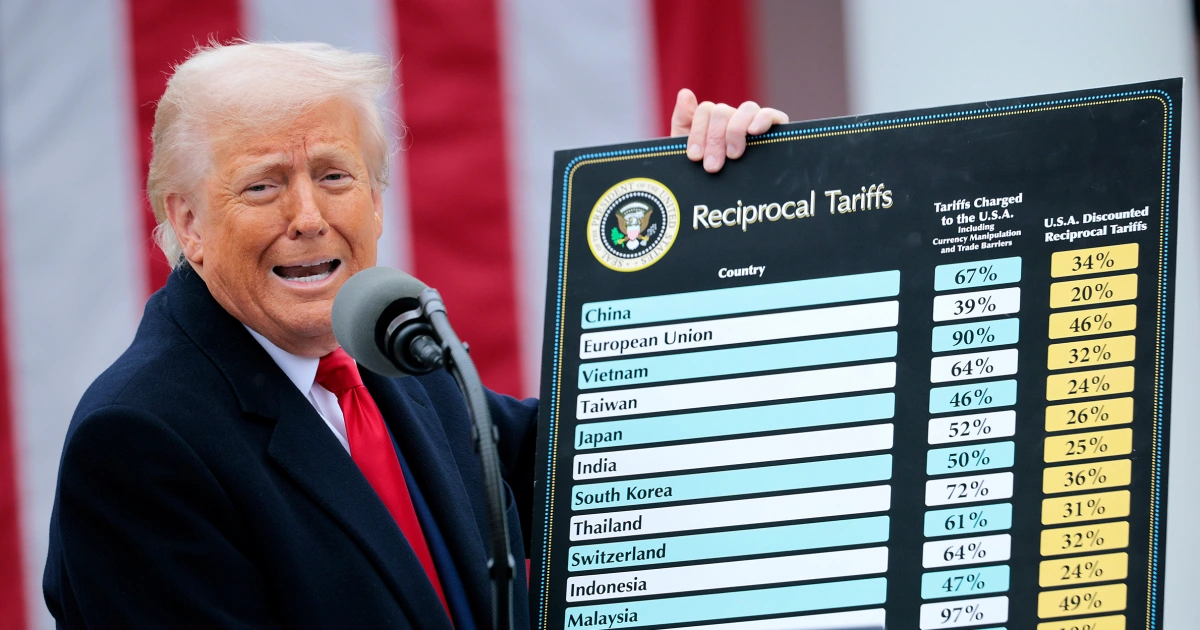
Trump Tariff
Let’s dive into Understanding US Tariffs, The Trump Tariff Calculation Formula and Its Impact on Global Trade in 2025
In 2025, the conversation around tariffs has once again taken center stage in American politics and global economics, this time with more weight and urgency.
That’s because Donald J. Trump is back in the Oval Office, now serving as the 47th President of the United States, following his historic return to power in the 2024 election.
His approach to tariffs bold, unconventional, and unapologetically protectionist, is once again redefining how America engages in international trade, widely known as the Trump Tariffs Formula.
What Are Tariffs and Why Do They Matter?
Tariffs are essentially taxes imposed on imported goods and services. Their core purpose is to protect domestic industries, generate revenue, and correct trade imbalances.
While tariffs have been part of U.S. trade policy for centuries, President Trump’s renewed leadership has brought a distinctly aggressive twist to their use.
Hence, positioning tariffs not just as economic tools, but as diplomatic weapons.
Trump’s Tariff Philosophy: “Reciprocal or Nothing”
President Trump has consistently argued that America has been the “loser” in global trade due to one-sided deals and foreign nations exploiting low or non-existent tariffs on their own exports.
His solution? Reciprocal tariffs, a trade policy built on the simple but potent idea: If a country taxes American goods at 25%, the U.S. should do the same in return.
This forms the foundation of what’s commonly referred to in 2025 as the Trump Tariff Calculation Formula.
It’s not a complex economic algorithm, but a politically charged and highly visible policy stance: mirror your competitor’s tariff rates to level the playing field.
Trump Tariffs Timeline: From 2018 to Now
- 2018: First round of tariffs imposed on steel and aluminum under Trump’s first term.
- 2020: U.S.-China trade war escalates, with steep tariffs on both sides.
- 2024-2025: Trump returns with a sweeping proposal—a 10% baseline tariff on all imports, with punitive rates for nations deemed hostile or unfair in trade.
In early 2025, his administration began implementing new layers of this tariff policy, creating ripples across international markets and triggering a surge in interest in search phrases like “Trump tariff 2025 explained” and “Trump tariff calculator.”
What Is the Trump Tariff Calculation Formula?

At its core, Trump’s approach to calculating tariffs is rooted in reciprocity. While traditional formulas are based on product classification and customs values, the Trump Tariffs Formula incorporates a political edge:
Trump Tariff Formula:
If Country A imposes a 20% tariff on U.S. goods, then the U.S. should impose an equivalent 20% tariff on imports from Country A.
It’s a bold departure from long-standing multilateral trade principles—and one that Trump argues will finally bring “real fairness” to global commerce.
Example:
If India taxes American medical equipment at 18%, the Trump administration could impose the exact same 18% tariff on Indian pharmaceuticals or textiles.
Critics argue it oversimplifies complex trade relationships, but to Trump’s base, it symbolizes strength, fairness, and America’s return to hardline economic diplomacy.
Pros and Cons of the Reciprocal Trump Tariff System
Pros:
- Forces countries to negotiate fairer deals
- Protects U.S. industries from foreign undercutting
- Boosts domestic production
- Generates additional revenue
Cons:
- Can lead to full-blown trade wars
- Raises prices on consumer goods
- Hurts companies dependent on global supply chains
- Can isolate the U.S. in global markets
Trump Tariff 2025: Strategic Tool or Economic Gamble?
The Trump 2025 tariffs are already shaking up global supply chains. Many companies are pivoting from Chinese or European suppliers and doubling down on domestic production. However, sectors like electronics, autos, and retail, heavily reliant on imports are bracing for price hikes.
Meanwhile, global players like China, the EU, and Canada are preparing countermeasures, raising concerns that America could face retaliatory tariffs, reduced exports, or exclusion from emerging trade alliances.
Trump’s Tariff Doctrine: Economic Muscle Meets Geopolitical Power
More than a simple trade tool, tariffs under President Trump have become a form of foreign policy. Countries like Japan, Mexico, and South Korea have faced pressure to renegotiate agreements to avoid punitive tariffs.
Trump’s message is clear: Deal fairly or pay the price.
While his critics label this approach “protectionism,” supporters argue that it’s about reclaiming America’s economic sovereignty.
Conclusion: The Tariff Era Reimagined
As of 2025, President Donald Trump’s return has reignited a new era of aggressive trade policy. His reciprocal tariff strategy is no longer just campaign rhetoric, it’s shaping real-world economic outcomes.
Whether you view it as a strategic masterstroke or a risky gamble, the Trump Tariffs Formula is once again front and center in global economic discourse.
For American consumers, businesses, and global leaders, understanding how Trump calculates tariffs could soon be essential for navigating the future of international trade.





